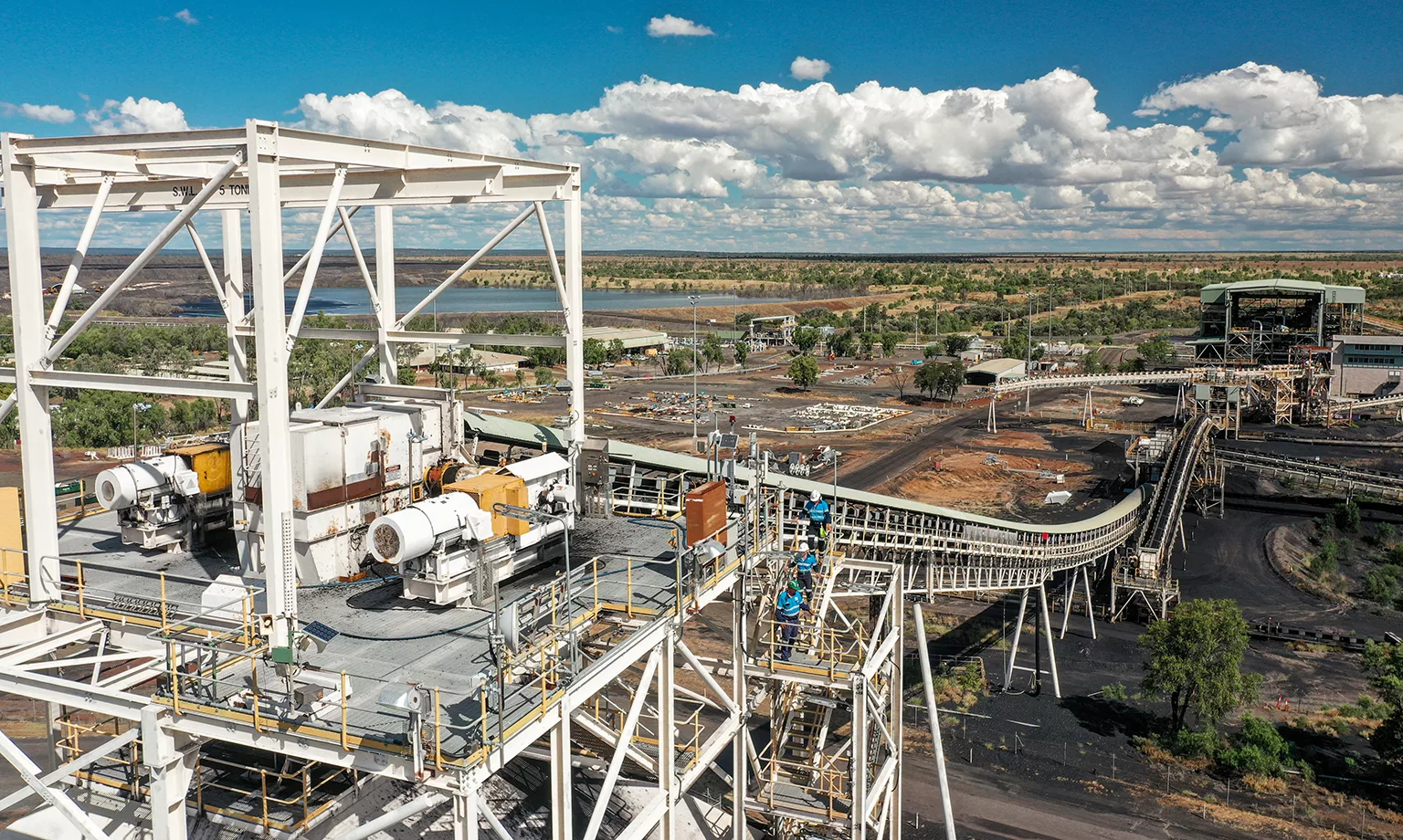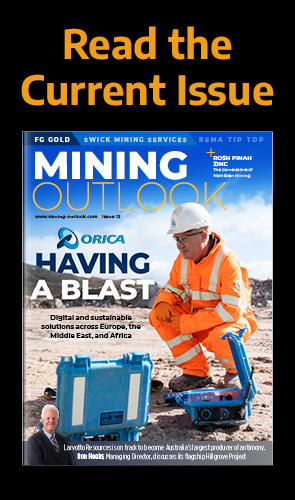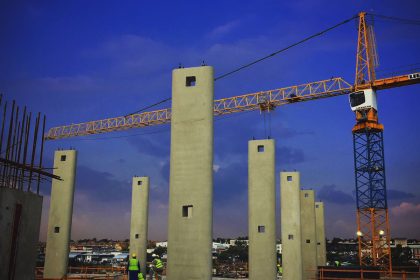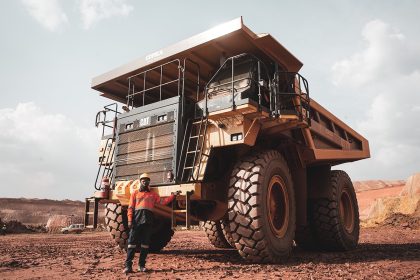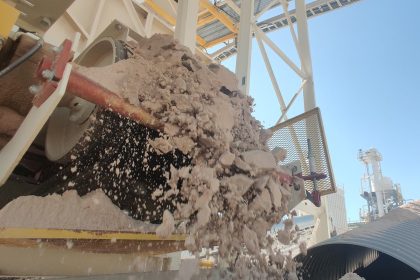In the consideration of how land should be re-purposed post-mining, Kestrel is now exploring ways in which this might further the company’s decarbonisation efforts by putting certain areas to good use for the generation of clean energy.
For Hansen, a potential foray into renewable energy represents an exciting avenue for the company to capitalise on.
“As we continue to plan for site rehabilitation, we see a significant opportunity for the development of renewable energy projects, particularly in the form of energy storage systems,” he shares.
“These sites have the necessary space, infrastructure, and location to support such initiatives, and repurposing these areas in this way would be a win-win situation – for us, the local community, and the environment.”
This idea of repurposing introduces another major environmental endeavour currently being undertaken by Kestrel, as the company continues its investigation of converting the gases related to coal mining into new, usable energy. As part of its prevailing commitment to reducing its carbon footprint through responsible operation, the potential impact of such a scheme in terms of decarbonisation at Kestrel could be enormous.
As Hansen affirms, “we are actively exploring ways to re-utilise gas derived from our mining activities for energy generation.”
As with any underground mining operation, harmful gases must be extracted to create safe working conditions. Coal-related gas emissions are the greatest contributor to Kestrel’s carbon footprint, with 88 percent of carbon emissions generated directly by the coal resource.
Consequently, the carbon impact of these gases takes priority over other means of emissions reduction such as diesel or electricity consumption, due to their relatively small impact on Kestrel’s overall footprint.
Of these coal-related gases, the need to mitigate vented-air methane (VAM) emissions is a major focus, since this particular gas is 28 times more potent a greenhouse gas (GHG) than CO2. With Kestrel now mining the deepest section of its deposit, this means that it is confronting heightened concentrations and densities of methane.
In an effort to mitigate negative impact, Kestrel is currently exploring the possibility of using this waste gas to achieve circularity by generating clean energy that can be used to power the mine’s operation.
A major step forward in this regard is Kestrel’s upcoming Waste Coal Mine Gas Power System (WCMGPS). This involves the construction of a 20-megawatt (MW) facility that will repurpose this gas to create clean energy. The facility will be fuelled by the mine’s existing system which drains gas directly from the coal seam and is connected to the mine’s existing 66 kilovolt (kV) electricity network, which in turn is connected to Ergon’s network at the Lilyvale Substation.
“The system will convert the WCMG to electricity and supply it to the mine to power mining operational requirements and reduce its demand on the Ergon network,” explains Fish.
Constructed over two phases, Phase 1 will establish a grid connection and achieve 4MW, while Phase 2 will see expansion to 20MW. Phase 1 takes advantage of shorter grid connection approval processes for small generators to start generating sooner and prepare the ground for the more ambitious Phase 2.
“This initiative is not only environmentally conscious, but it also allows us to utilise what we have and effectively turn waste into sustainable energy,” elaborates Hansen.
The construction of the WCMGPS falls into Kestrel’s Decarbonisation Plan, as part of the company’s wider ESG Strategy. This provides an LOM vision and implementation plan for ongoing decarbonisation to meet both legislation and expectation.
“We intend to advance the continuous progression of our LOM decarbonisation strategy,” affirms Fish.
Within this, Kestrel is focused on exploring other opportunities to reduce its coal mine waste gas emissions, specifically in finding technologies that will allow the conversion of VAM to or other usable methane concentrations, as its biggest single possible reduction in carbon emissions.
As a result, the company is actively looking to secure energy partners with whom it can work towards gas reuse, in addition to achieving energy efficiency across the site and sourcing components of its electricity usage from renewable sources.
“We’re looking at harnessing new technologies and processes to further enhance our efficiency, with a focus on minimising our environmental footprint,” Hansen informs us.
In its search for new partners to achieve this ambitious energy venture, Kestrel calls on a history of successful and rewarding relationships with a robust network of suppliers that it has worked with to date. This proven track record of successful partner relationships gives cause for confidence in whoever it collaborates with for future endeavours.
Representing another extension of the Kestrel community, suppliers are intrinsically linked to the company’s story and success to date. As evidenced by its emphasis on locality, Kestrel ensures that any local or Indigenous companies with known capabilities are included in the tender process when it engages the market.
“Suppliers are a key part of the Kestrel business,” continues Cavill. “Whether it be supplying personal protective equipment (PPE) to the team, or services to support our underground operations, without the support of our suppliers in the local community we could not achieve our goals as a business.”
As Strategic Sourcing Manager, Cavill’s role at the company is to draft, negotiate and execute contracts that deliver optimal safety and operational outcomes, and are also commercially viable for both Kestrel and its contracting partners.
In all its dealings in terms of procurement and supply chain, the company’s key drivers are responsibility, integrity, and fair play. True to its core value of being both respectful and committed, Kestrel follows a partnership approach that nurtures longevity and loyalty, building lasting relations with service providers that are founded on mutual respect and reliability.
“We want to establish long-term relationships with our contracting partners that promote safety and production outcomes, as well as stability for our contractor workforce and the regions we work in,” he elaborates.
In line with its own unrelenting standards, the company expects all contractors and suppliers, including sub-contractors, to consistently adhere to the relevant legislative requirements, code of practice, and Kestrel’s own SHMS.
The business’ preference for buying local in this regard is strongly reflected in its supply chain profile. In 2022, Kestrel worked with 305 local and regional suppliers, with a total spend of AUD$237 million throughout the year. Overall, 87 percent of Kestrel’s suppliers are based in Queensland, with 76 percent of its supply chain expenditure directed into the region.
“Without the support of our suppliers in the local community, we could not achieve our goals as a business”
Damian Cavill, Strategic Sourcing Manager, Kestrel Coal Resources



